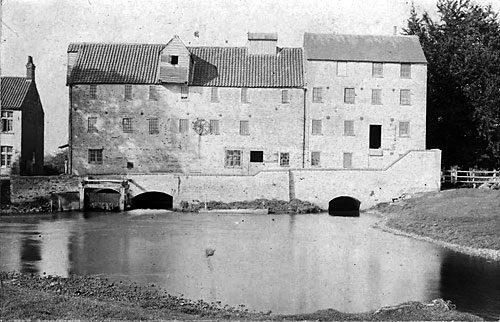 |
|
c.1910
|
|
North Elmham Mill
River Wensum |
 |
|
c.1910
|
|
North Elmham Mill, sometimes known as Grint Mill, once ran two breastshot wheels using the six foot head of water available but these were taken out before the second world war and replaced by turbines. As larger machinery was installed it became necessary to move over to electricity, however one turbine continued to drive the sack hoist and the other worked two mixing machines. The mill was still working producing animal feed in 1970. |
 |
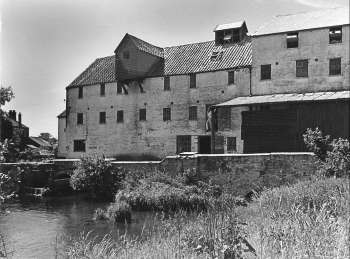 |
|
1951
|
c.1960 |
On Monday last was married at Heigham, Mr Henry Hall, Miller, at Elmham, to Miss Clarke, of Worthing. |
|
To the sensible, humane, and generous Part of Mankind, this Publication
of the Case of Henry Hall, of Grint-water-mill, in the Parish of North
Elmham, Miller, is humbly submitted, in Hopes of its having some Weight
with them, in clearing up his Character. On Friday, the 27th of July last,
(the day of the Justices sitting at Dereham) I was charged, on the oath
of Mary, the wife of Gabriel Farrer, of Mattishall, who sells meal and
flour for me, and also on the evidence of three or four poor persons in
Mattishall, who purchased small parcels of meal and flour of Farrer, with
Knowingly selling to Farrer wheat meal adulterated, and mixed with barley
meal, as, and for, and at the Price of, whole wheat meal, contrary to
the clause of the statute of 31 Geo. 2 sect. 22, which says, "That
no person shall, Knowingly, put into any corn, meal, or flour, which shall
be ground, dressed, bolted, or manufactured for sale, either at the time
of grinding, dressing, bolting, or in any wise manufacturing the same,
or at any other time, any ingredient, mixture, or any other thing whatever,
or shall Knowingly, sell, offer, or expose to sale, any meal or flour
of any sort of grain, or any other thing, as, and for, or mixed with the
meal and flour of any grain, which shall not be the real and genuine meal
and flour the same shall import to be, and ought to be, on pain of forfeiting
not more than five pounds, nor less than forty shillings." On this
evidence chiefly, as far as I can recollect, I was ordered to pay down
5 pounds directly as the penalty, which, although innocent of the crime
charged upon me as the child unborn, I unfortunately complied with, without
considering the consequence; for I was not acquainted at that time, that
the statute gave me 24 hours for payment before I could be convicted,
and that I might appeal to the Sessions. Without doubt the payment of
this 5 pounds penalty must be generally construed as one of the strongest
arguments of my guilt; but if on reflection, my distressed situation be
considered, an unexperienced youth, not yet 21 years of age, called to
answer before a room full of people, unacquainted with the law, without
a friend at that time to advise or assist me; and above all so overpowered,
that for a time I was so far bereft of my senses, as to be glad to pay
any demand We John Bone, John Norton, and Edward Rust, servants to Henry Hall,
each speaking for himself, are ready to testify in the most solemn manner,
that to the best of our knowledge and belief, the case above set forth
by the said Henry Hall is the real truth; and farther, that we never |
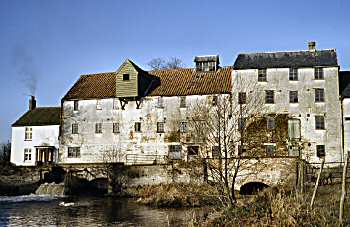 |
 |
|
The mill house still occupied c.1961
|
The mill house demolished c.1963 |
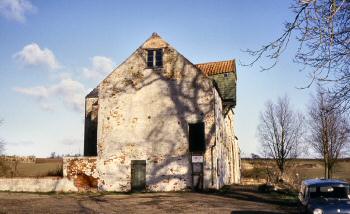 |
|
Mill
gable end showing door to from the house c.1963
|
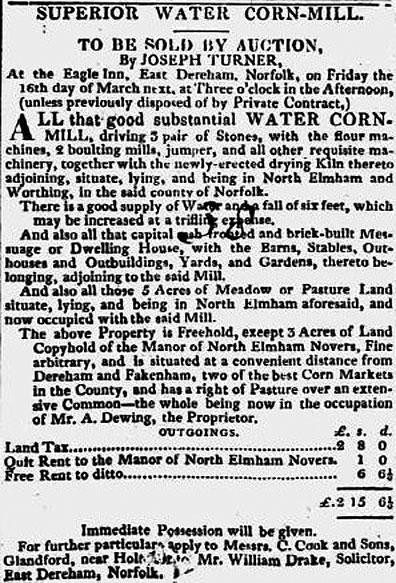 |
|
Norwich & Bury Post - 21st February 1827 |
 |
|
Norfolk Chronicle - 27th June 1829 |
|
... I have not said anything about my son Thos. Whom you used to carry about. He is very thin and tall, rather delicate in his construction but think he will get strong after a time. |
Robert Norton's ex apprentice, Robert Rudd had a sister Susan, who at the age of 19 had married William Skinner, a wealthy Whissonsett farmer who was 43. They had several children, one of whom was John Skinner who was also an apprentice miller but he got himself into some kind of trouble at the age of 17 and was shipped off to Michigan to join his uncle Robert in the American milling business. After a while he got into more trouble and was sent to Tasmania where another uncle John Rudd had a large cattle ranch. This John Rudd was married to Martha Goggs, sister of the 'Gogg's Mill' Thomas Goggs at Hempton. The Goggs family lived at Whissonsett Hall. An earlier member of their family, Mary Raven, married William Hardy who owned Letheringsett watermill and various other mills and breweries around the county. They founded the Cozens-Hardy family. |
|
... I have not said anything about my son Thos. Whom you used to carry about. He is very thin and tall, rather delicate in his construction but think he will get strong after a time. |
Mr. C. M. Bidwell is instructed to sell by Auction at the King's Arms Hotel, East Dereham, on Friday August 26th, 1859 at 5 o'clock |
 |
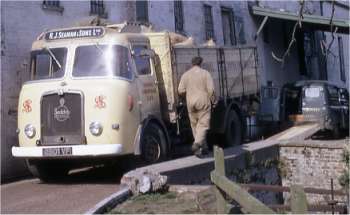 |
|
April 1971
|
RJ Seaman's lorry April 1968 |
|
R.J. Seaman & Sons, which became one of the largest agricultural merchanting business in the eastern counties was started in North Elmham around the beginning of the 1900s when local farmer, Robert Seaman took over North Elmham Mill. Using a £50 loan from the former mill owner, he started by producing stone ground flour but as there was virtually no demand for the flour, the business nearly closed in the first few months. However, taking the advice of his five sons, who were also working at the mill, Robert Seaman converted the mill from flour to provender milling, thus allowing the sale of feed products to farming colleagues. In 1929 Seaman's took over the Station Granary beside the railway at North Elmham and soon afterwards, this site became the company's headquarters. In 1946, after Mr. W.O. Sea man took over and developed a small Swaffham company the R.J. Seaman & Sons became a limited company. During the course of the next 50 years the company increased dramatically in size and eventually sold out to British Field Products in 1955. In 1961 the group acquired Press, Bly & Davey along with the Norwich Grain Company and in 1964 the 13,000 acre Weasenham Farms Co. joined the group. In 1968 British Field Products, which was originally founded by Lord Melchett in 1949, was in turn acquired by Guardian Assurance Company. In 1969 Guardian doubled in size when it merged with the Royal Exchange thus providing Seaman's with stability and strong financial backing. Another part of the Seaman family had split away years previously and ran Bintry_Mill under the trading name of Robert Seaman Ltd. |
In 1959 the mill was still using the two turbines, one powering the sack hoist and the other running two mixing machines, leaving the grinders and meal cubing machinery to run by electricity. |
 |
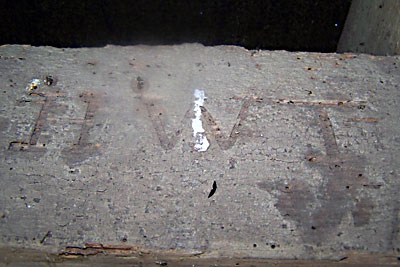 |
|
Inscriptions on beams at top of the mill photographed October 2011. HWJ possibly Henry Jacob in 1700s
|
|
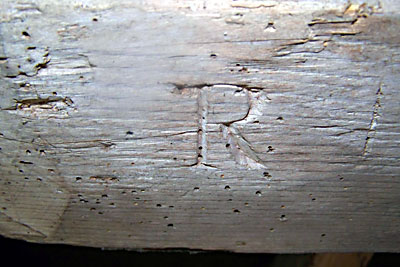 |
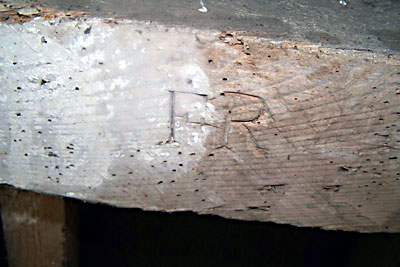 |
|
Inscriptions on beams at top of the mill photographed October 2011
|
|
 |
|
Inscriptions on beam at top of the mill photographed October 2011 Possibly John Bone c.1780 |
In 1988 it was noticed that a beam in the older part of the mill was inscribed: |
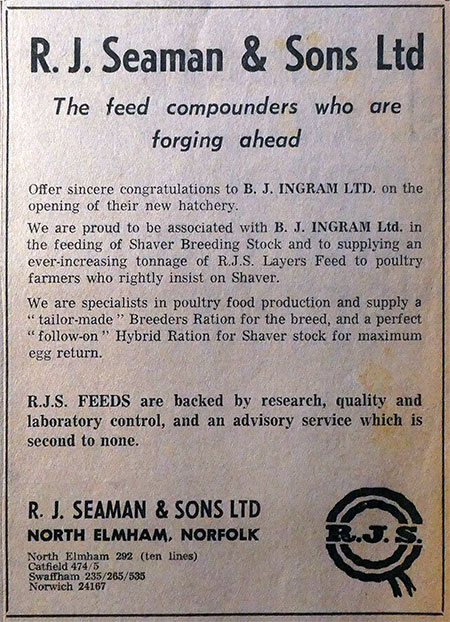 |
|
Eastern Daily Press advert c.1967 |
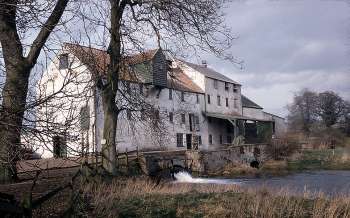 |
|
March 1967 |
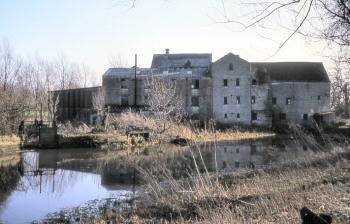 |
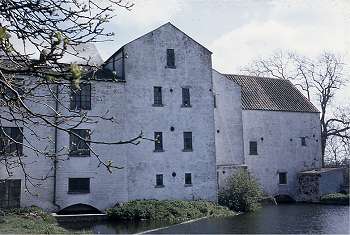 |
|
Mill dam c.1963
|
Mill dam April 1967 |
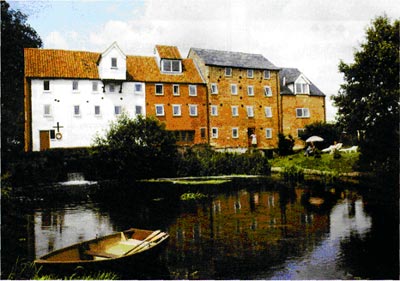 |
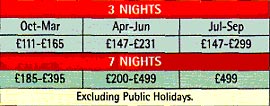 |
Holiday brochure advert 1999-2000 |
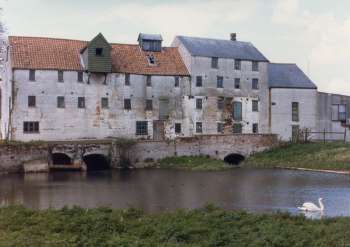 |
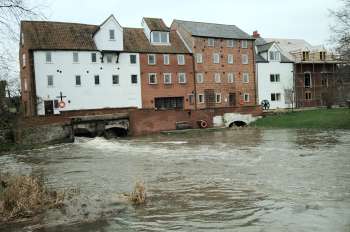 |
|
1st May 1977
|
31st December 2002 |
|
By November 2002 the mill had been converted into 9 leasehold apartments that were being advertised for sale by estate agent John B. Shrive. |
 |
|
31st
December 2002
|
|
Whilst I was working for British Field Products, (based at Walsingham) as a Maintenance Fitter, |
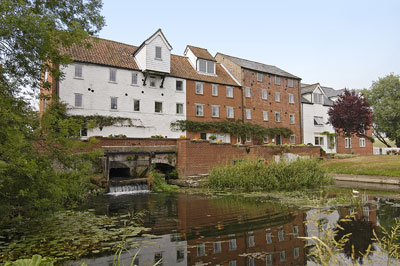 |
6th July 2006 |
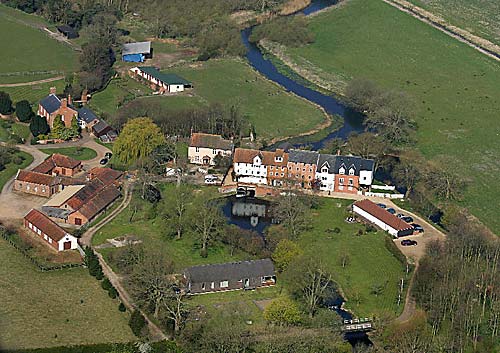 |
8th April 2007 |
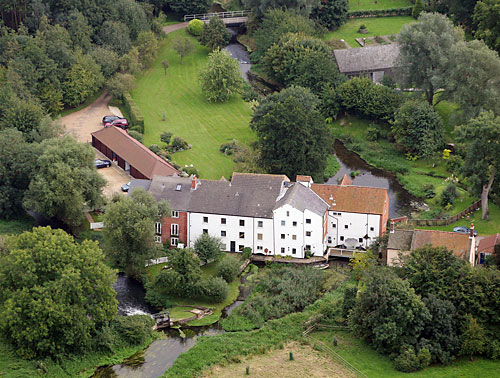 |
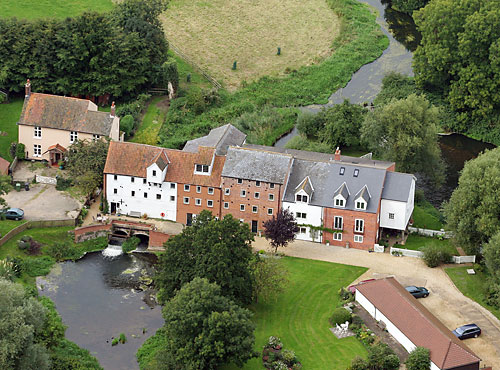 |
16th September 2008 |
|
|
December 2004
luxury apartment for sale: |
Mills |
|
6.16 The mill structures have a profound influence on the river system in the Wensum catchment. If high retained water levels continue upstream of the mills, they would form a significant constraint on the effectiveness of river restoration. Physical modifications at mill sites should aim to restore a more natural longitudinal profile to the river and to remove or reduce physical barriers to the movement of fish and wildlife. Whilst historically a number of mills have been in existence for centuries these have always very actively stored and released water and the cessation of working of the mills in combination with dredging has had a significant impact. 6.17 The recommended actions at mill structures are shown in Table 9. At a number of sites there is no mill building and removal of water level control structures would be the desired course of action. However, often there are multiple channels at a mill site and it is likely that some hydraulic controls would be needed to maintain a split of flows to all channels. These would probably take the form of a fixed crest and a natural chute that would allow the passage of fish and woody debris. At locations where the water level control structures are part of the historic mill building, there is often a variety of passageways and the best way to lower levels will need to be identified using more detailed survey. Initial action can be taken at low cost by merely adjusting operating levels using the available gates and stop boards. The reduction in head that could be achieved at a typical dry weather flow is also summarised in Table 9. The estimated maximum reduction in backwater length through changing the operational level of the sluices (that is, without the need for major engineering works) is 18km. This would reduce the length of the River Wensum SSSI affected by backwater from mills from 67% to 40%. To achieve this it would be necessary to ensure that no channels downstream of gates or fixed weirs are affected, but this could be a cost effective start to the Wensum restoration. 6.18 It is likely that at some locations, where the channel course has been altered and the mill channel is significantly higher than the natural channel, the main flow could be diverted upstream of the current mill location. Maintaining some flow to the original mill weir is likely to be preferable for aesthetic and heritage reasons, so by-passing is likely to be required in conjunction with lowering of the mill weir. Sites where such a solution is envisaged are at Great Ryburgh and Lyng. 6.19 The control structures at Costessey, Swanton Morley and Fakenham are used for flow gauging by the Environment Agency. Lowering these weirs may mean that the existing gauging arrangements will need to be replaced by other methods, such as ultrasonic techniques. The weir on the main channel at Swanton Morley has a two stage drop and a significant reduction in water level could be achieved there without affecting flow gauging through the bridge. 6.20 A former mill known as Gogg‟s Mill near to Fakenham was removed as part of the drainage improvement works of the 1950s. The channel upstream of the mill has narrowed significantly through the accretion of silt berms, and provides a good case study of the extent to which natural recovery can help restore natural river form and function. 6.21 As part of the River Wensum Water Level Management Plan being prepared by Entec (2007) the views of some private owners on changes in operating level have been canvassed. In broad terms this is not opposed, but there is concern to maintain an attractive setting incorporating some mill pond in line with the historical context particularly at: 1) Elsing 2) Great Ryburgh 3) Bintree 4) North Elmham 5) Lenwade. 6.22 A reduction in the retained water level at mills may constrain the ability to direct water through all the existing channels at mill sites, should this still be required, there may be a need to carry out physical modifications to some of the subsidiary water level control structures. River Wensum Restoration Strategy - Natural England, 26th June 2009 |

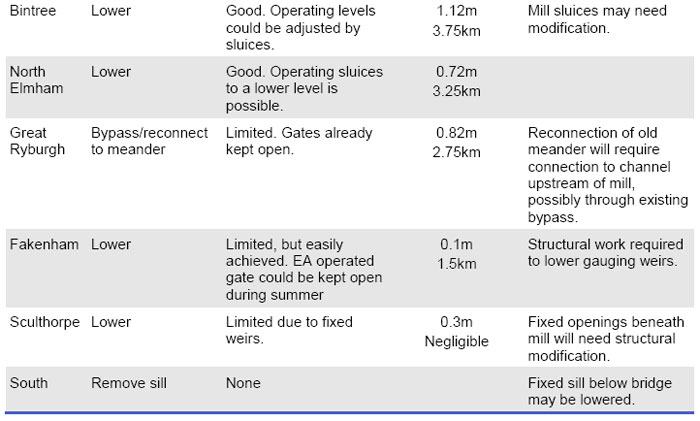
Major project to restore Norfolk river |
|
A major project is under way to restore a 45-mile stretch of a Norfolk river which is described as one of the county's "hidden gems." The River Wensum is a chalk river with a range of important wildlife and landscape features and is a Site of Special Scientific Interest and Special Area of Conservation. The Environment Agency is working in partnership with Natural England, landowners, fishing clubs and others to restore a section of the river, which has had water quality problems caused by issues such a high levels of phosphates, over abstraction, siltation and modification to the channel. A range of projects are being carried out as part of the River Wensum Restoration Strategy to change the river, which has been made too deep, too wide and has been straightened. Richard Leishman, of Natural England, said: "It is really exciting to be able to take a fresh look at how society values the river and to find new ways of managing the river while improving wildlife habitat. We're really excited by the number of restoration schemes that have already been achieved and hope it will fuel the development of future projects to improve one of Norfolk's hidden gems." The Environment Agency and Natural England have held six public events to get the views of local people and groups and the feedback will be used to plan the projects. Work on the river began last year when two gravel glides were created at Attlebridge to provide spawning habitat for fish. A large silt island was also removed at North Elmham Mill to ensure a good water flow in flood conditions and silt has been removed from other parts of the river. A major project at Bintree was completed in December to improve 700 metres of the river. It was done with co-operation of the landowners and the trout fishery and included reconnecting the river with its floodplain, narrowing the channel, reinstating the gravel river bed and putting some of the meanders back along the channel. Project manager John Abraham, of the Environment Agency, said: "The strategy has now moved into the implementation phase, which is a very exciting time. Following from our successful scheme at Bintree, we are looking to bring further schemes to detailed design, where the opportunities present themselves. There is still a lot of work to do behind the scenes, but it is great to see work now being carried out to improve both the form and function of the River Wensum, which in turn will create a better environment for the wildlife that relies on the river." Ian Clarke, Eastern Daily Press - March 2010 |
|
I am a North Elmham local mechanical engineer Mark Latham and was employed in my spare time back in the 1980s by the then owner of the mill to see if we could get the old turbine working again which was located underneath the mill and covered with river silt and had not been working for years. |
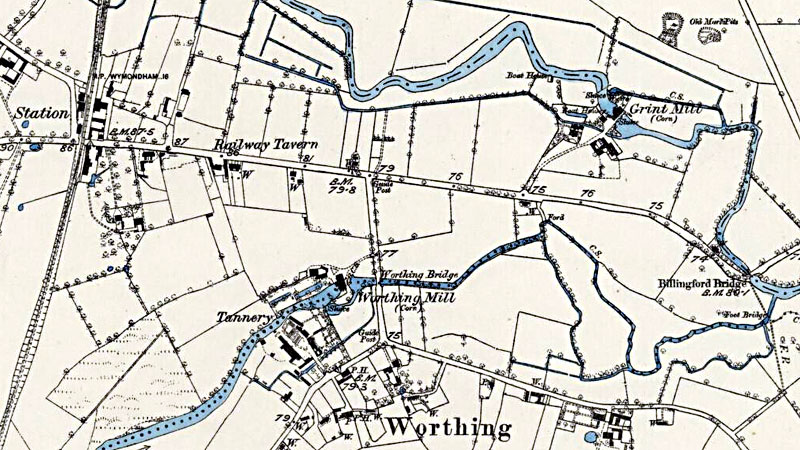 |
O. S. Map 1881-83 |
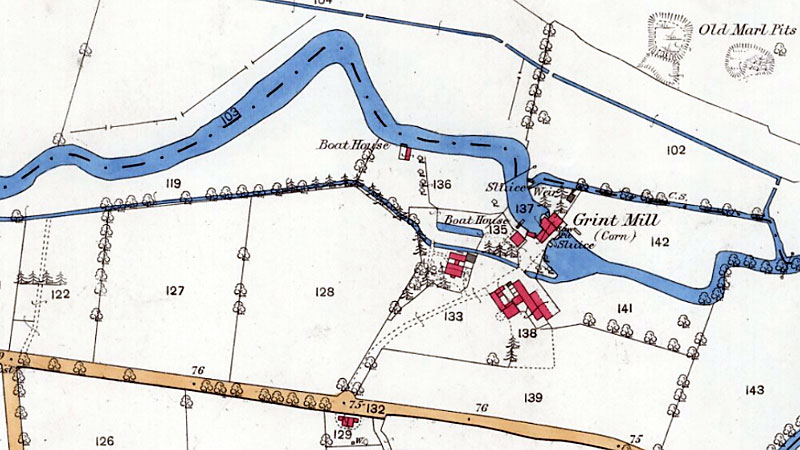 |
O. S. Map 1883 |
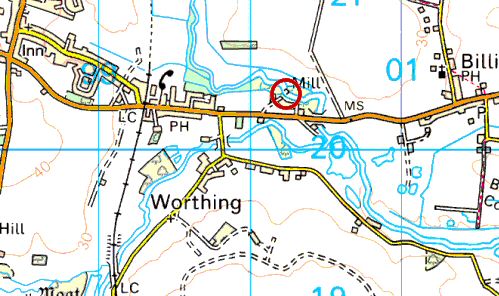 |
O.S. Map 2005 Image reproduced under licence from Ordnance Survey |
|
1780: Henry Hall, miller |
If you have any memories, anecdotes or photos please let us know and we may be able to use them to update the site. By all means telephone 07836 675369 or
|
| Nat Grid Ref TG00242036 | Copyright © Jonathan Neville 2004 |